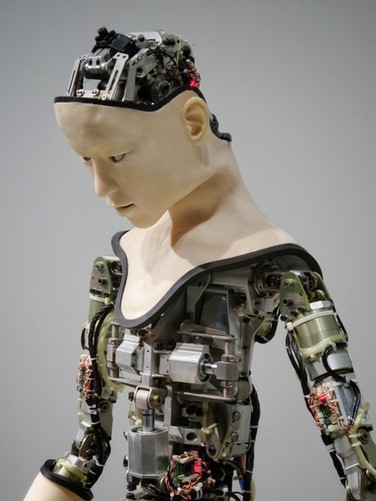
Robots are often seen as hallmarks of the future and it is easy to see why. From delivery drones to large-scale automation, these artifacts of technology often help solve problems that shape the lives of everyday people.
And whether it be in the form of personal assistance or factory efficiency, robots have always captured the attention and speculation of humankind alongside questions of morality and ethics in sci-fi and real-life media.
Usually used to propel the story plot to have human audiences reflect upon their own conceptions of the balance between progress and ethics, dystopian films have had a handful of speculation on the consequences of mistreating robots. Some have even gone through lengths to depict an eerily life-like parody of how Boston Dynamics robots could fight back after constant mistreatment.
But as strange as it sounds, robots that could "feel" pain might be a good thing.
Among questions of artificial intelligence and autonomy, the concept of Asimov's Laws of Robotics has often been used as a guiding principle. While most often focus more on the first two principles regarding limiting harm to others, the last principle is worth attention: that a robot should protect its own existence as long as it does not come into conflict with the two principles prior.
Robots are almost exclusively built to do jobs humans can't. Sometimes it's for the efficiency of the machine to create job orders by the thousand with minimal mistakes, but it is just as often about the inability of a person to work in hostile environments. While humans would likely suffer from long-term ailments from cleaning after nuclear spills, a robot could be designed to be resilient against corrosion and other forms of hazards.
But sending satellites and rovers to space can only be remotely maintained in a limited capacity. Equipment that cost billions of dollars could be at risk without sensors that could help curb potential threats.
So while the approach sounds counterintuitive to Asimov's laws, Cornell University's Patricia Xu and Rob Shepherd have been developing an optical lace that could allow robots to mimic the sensation of pain as a form of navigational aid.
Much like how humans could navigate in the dark more carefully by feeling around with their hands and feet, the technology aims to develop an artificial nervous system for robots to limit potential damage done to its hardware. The sensor itself is made of optical fiber woven into a 3D-printed elastomer.
The so-called optical lace is impressive in that on top of being stretchable, it could identify where and how hard forces are applied millimeters from each other. While previous researchers have succeeded in making artificial skin that could mimic the sensation of touch for robots, the Cornell University researchers' approach is among the pioneers of successfully wiring nerve-like networks within a robot's "body".
The development of this technology has seen efforts from researchers all over the world such as Germany-based Johannes Kuehn and Sami Haddadin (who have also been teaching robots how to feel pain), Stanford University and Seoul National University researchers Zhenan Bao and Tae-Woo Lee (who have been creating ways for prosthetic devices to feel pain using cockroaches), as well as researchers from the University of Singapore (who have been focusing on building Asynchronously Coded Electronic Skin).
While for the most part, the study of this field has largely been for prosthetic aid, technology such as the optical lace could prove to be helpful in remotely maintaining a system in the long run.
RELATED ARTICLE: LOOK: A Robot Hand With a Human Touch
© 2025 NatureWorldNews.com All rights reserved. Do not reproduce without permission.





